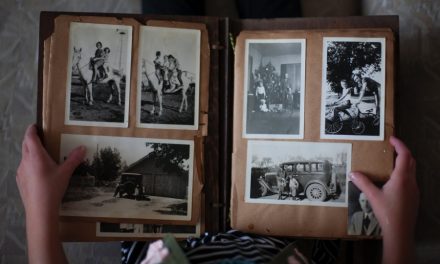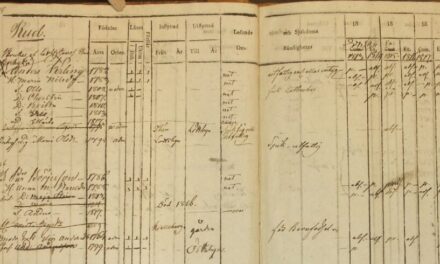The impact of immigration has long been a driving force in shaping family histories across the globe. It carries with it a profound influence on family dynamics, cultural heritage, identity, and generational perspectives.
As individuals and families migrate to new lands, they bring their unique stories, traditions, and experiences, which intertwine with the fabric of their adopted homes. Exploring the impact of immigration on family history unveils a tapestry of diverse narratives, challenges, and opportunities. In this article, we delve into different subtopics to better understand the multifaceted effects of immigration on the rich tapestry of family histories.
Table of Contents
Historical Context: Tracing the Roots of Family Immigration
Understanding the historical context surrounding family immigration provides valuable insights into the reasons, circumstances, and journeys that shaped our ancestors’ paths. It allows us to uncover the socio-political, economic, and cultural factors that propelled individuals and families to leave their homelands in search of new opportunities and better lives.
By delving into historical records, archival materials, and oral histories, we can piece together the intricate narratives of our family’s immigration. The exploration might reveal stories of economic hardships, political turmoil, religious persecution, or aspirations for a brighter future. Each family’s immigration journey is unique, reflecting the larger historical backdrop against which it unfolded.
Tracing the roots of family immigration often involves studying immigration waves, policies, and events that impacted specific regions or countries. It may uncover patterns of migration, such as mass exoduses during conflicts or migrations spurred by economic booms. Understanding the historical context allows us to appreciate the challenges our ancestors faced and the resilience they demonstrated in embarking on arduous journeys to distant lands.
Moreover, historical context sheds light on the social and cultural dynamics that influenced the integration process of immigrant families. It helps explain the formation of ethnic enclaves, the preservation of ancestral traditions, and the struggles and triumphs of adapting to new cultures and languages.
By exploring the historical context of family immigration, we can gain a deeper appreciation for our ancestors’ sacrifices and the foundations upon which our family histories were built. It fosters a sense of connection to our roots and provides a broader perspective on the diverse tapestry of human migration that has shaped our world today.
Shaping Family Dynamics: Immigration’s Influence on Family Structures
Immigration has a profound impact on the dynamics and structures of families, reshaping relationships, roles, and traditions. The experience of moving to a new country introduces a range of challenges and opportunities that can profoundly influence how families function and evolve.
One of the primary ways immigration shapes family dynamics is through the separation and reunification of family members. Often, individuals or small groups embark on the initial journey, leaving behind parents, siblings, or other relatives in their countries of origin. This separation can create a complex web of emotions, as families navigate the longing for reunion while adapting to the realities of a new life in a foreign land.
Upon reuniting, families face the task of rebuilding their relationships within a new cultural context. Language barriers, cultural differences, and generational gaps can all pose unique challenges. Immigrant families often navigate the delicate balance of preserving their cultural heritage while embracing the opportunities and norms of their adopted country. This interplay between old and new traditions contributes to the rich tapestry of family dynamics shaped by immigration.
Moreover, immigration can lead to a restructuring of traditional family roles. In some cases, parents who held esteemed positions or professions in their home countries may find themselves in unfamiliar or lower-status jobs in the new country. This shift can impact the power dynamics within the family, altering parental roles and responsibilities. Children may also find themselves taking on new roles as translators, cultural intermediaries, or primary navigators of the host society’s systems.
Immigration also opens doors to new possibilities and aspirations for families. It provides opportunities for education, economic advancement, and social mobility. These aspirations, coupled with the resilience and determination that often characterise immigrant families, can lead to remarkable achievements and intergenerational progress.
In summary, immigration exerts a transformative influence on family structures, challenging traditional roles and relationships while fostering resilience, adaptability, and cultural richness. Understanding the dynamics that emerge within immigrant families provides a glimpse into the complexities and strengths that emerge from the intersection of heritage and new beginnings. It highlights the extraordinary stories of love, sacrifice, and growth that contribute to the vibrant tapestry of immigrant family histories.
Cultural Heritage: Preserving and Celebrating Ancestral Traditions
Immigration brings with it a precious gift—cultural heritage. As families embark on journeys to new lands, they carry with them a tapestry of ancestral traditions, customs, and values that are integral to their identity. Preserving and celebrating this cultural heritage becomes a vital endeavour for immigrant families, fostering a sense of belonging, pride, and continuity across generations.
One of the ways immigrant families preserve their cultural heritage is through the transmission of language. Language acts as a vessel of cultural expression, carrying with it unique idioms, proverbs, and ways of communicating. By teaching their native language to their children, families ensure that an important aspect of their cultural identity endures. Through language, stories, and oral traditions are passed down, connecting individuals to their roots and providing a link to ancestral knowledge.
Traditional cuisine also plays a significant role in preserving cultural heritage. Immigrant families often prepare and share meals that reflect their native flavours, aromas, and culinary techniques. These dishes become more than sustenance; they become a tangible expression of cultural heritage and a way to pass on family recipes and cooking traditions. By preparing and enjoying these cherished foods, immigrant families ensure that their ancestral flavours remain alive and celebrated.
Celebrations and festivals provide another avenue for preserving cultural heritage. Immigrant families often continue to commemorate and participate in traditional holidays, religious ceremonies, and cultural festivals, even in their new homeland. These occasions serve as vital connections to ancestral traditions, allowing families to gather, share stories, perform rituals, and showcase their cultural practices to younger generations. Through these celebrations, the vibrancy and beauty of cultural heritage are perpetuated and celebrated.
Beyond language, cuisine, and celebrations, cultural heritage is also preserved through the arts, music, dance, and craftsmanship. Immigrant families continue to engage in traditional artistic expressions, creating and showcasing works that reflect their heritage. These artistic endeavours serve as a bridge between the past and the present, capturing the essence of cultural identity and providing a means of expression and connection.
Preserving and celebrating ancestral traditions within immigrant families fosters a deep sense of identity, belonging, and cultural pride. It reinforces the importance of heritage, while also allowing for adaptation and integration into the diverse fabric of the host society. By embracing and sharing their cultural heritage, immigrant families contribute to the multicultural tapestry of their new homeland, enriching the collective experience of all who are fortunate enough to partake in their traditions.
In essence, the preservation and celebration of ancestral traditions within immigrant families ensure that cultural heritage remains a vibrant and cherished aspect of their lives. It acts as a thread that connects past, present, and future, anchoring families to their roots while embracing the opportunities and experiences of their new surroundings.
Identity and Belonging: Navigating Dual Cultural Identities
Immigration gives rise to a unique experience of navigating dual cultural identities. For immigrant families, this journey involves reconciling the heritage and values of their country of origin with the influences and expectations of their new homeland. The process of shaping an identity that embraces both cultures while forging a sense of belonging is a complex and deeply personal endeavour.
Immigrant individuals often find themselves straddling two worlds. They carry the rich tapestry of their cultural heritage, rooted in their family’s traditions, language, and customs. Simultaneously, they navigate the norms, language, and social dynamics of the host society. This balancing act requires navigating a delicate interplay between preserving their roots and embracing the opportunities and experiences of their adopted country.
For younger generations, the process of identity formation can be particularly nuanced. Growing up in a multicultural environment, they may experience a sense of hybridity, where elements from both cultures merge to form a unique sense of self. They may find themselves blending traditional values with contemporary perspectives, embracing the diversity of their identity and forging new cultural expressions that reflect their multifaceted upbringing.
Language plays a vital role in shaping dual cultural identities. The ability to communicate fluently in the language of the host society becomes a bridge to integration and a key to accessing opportunities. Yet, preserving the language of their ancestors allows individuals to maintain a connection to their roots, facilitating communication with older generations and enabling a deeper understanding of cultural nuances.
Navigating dual cultural identities also involves exploring and understanding the historical and social contexts that shape both cultures. Immigrant families may delve into the histories, literature, and arts of their country of origin, while also immersing themselves in the cultural landscape of their new home. By doing so, they develop a multifaceted lens through which they view the world, appreciating the beauty and complexity of their dual heritage.
Identity and belonging are not fixed concepts but rather fluid and evolving. Immigrant families continually negotiate and redefine their sense of self and belonging as they move through different stages of life and encounter new experiences. The process involves embracing the diversity within themselves and celebrating the cultural tapestry that makes them unique.
Ultimately, navigating dual cultural identities is a journey of self-discovery, resilience, and embracing the richness of multiple cultural lenses. It allows immigrant individuals and families to forge a sense of belonging that transcends geographical borders and embraces the multifaceted nature of their identities. By navigating this intricate path, they contribute to the diverse mosaic of cultures that enrich our global society.
Generational Perspectives: Stories of Immigration Passed Down Through Family History
Immigration stories hold a profound significance within families, as they serve as a bridge connecting past, present, and future generations. These stories, passed down through family history, provide invaluable insights into the experiences, challenges, and triumphs of our immigrant ancestors. They offer a unique generational perspective that strengthens familial bonds and shapes the identity of subsequent generations.
As immigrant families share stories of their ancestors’ immigration journeys, they weave a narrative tapestry that transcends time. These stories often recount tales of resilience, sacrifice, and courage, providing a profound understanding of the hardships faced by previous generations. They shed light on the motivations, aspirations, and dreams that compelled individuals and families to leave their homelands in search of new beginnings.
Generational perspectives on immigration stories also offer a glimpse into the triumphs and accomplishments that emerged from the immigrant experience. These narratives highlight the remarkable achievements, hard work, and determination that propelled immigrant families forward. They inspire younger generations by showcasing the transformative power of resilience, adaptability, and the pursuit of dreams.
The passing down of immigration stories fosters a deep sense of pride in one’s cultural heritage and ancestral roots. It instils a sense of belonging, providing a link to the shared history and heritage that binds a family together. These stories become a treasured inheritance, carrying with them the wisdom, values, and lessons of the past.
Moreover, generational perspectives allow younger family members to gain a broader perspective on their own identity and place in the world. By understanding the struggles and triumphs of their ancestors, they develop a deeper appreciation for the opportunities and freedoms they enjoy today. They also recognise the responsibility to carry forward the legacy of their family, preserving their cultural heritage and making their own contributions to society.
Immigration stories passed down through family history serve as a reminder of the resilience and strength that resides within each generation. They offer a lens through which we can view our personal journeys in the context of a larger narrative of human migration. By honouring and sharing these stories, immigrant families ensure that the experiences and contributions of their ancestors continue to shape and inspire future generations.
In conclusion, generational perspectives on immigration stories provide a vital link between the past, present, and future within immigrant families. These narratives foster understanding, pride, and resilience, strengthening familial bonds and shaping the identity of subsequent generations. Through the power of storytelling, the legacy of immigrant ancestors lives on, shaping the values, aspirations, and achievements of their descendants.
Challenges and Opportunities: Balancing Assimilation and Retaining Cultural Heritage
Immigration brings forth a unique set of challenges and opportunities for individuals and families as they navigate the delicate balance between assimilation into the new culture and retaining their cultural heritage. The process of adapting to a new society while preserving one’s identity is a complex endeavour that presents both obstacles and possibilities.
One of the primary challenges faced by immigrant families is the pressure to assimilate into the dominant culture of their new homeland. Language, customs, and societal norms differ, and finding a sense of belonging often requires acquiring new skills, adapting to different social dynamics, and embracing unfamiliar traditions. This process of assimilation can sometimes lead to a sense of disconnection from one’s cultural roots and the erosion of traditional practices.
However, within these challenges lie remarkable opportunities. Immigrant families have the unique advantage of being exposed to diverse perspectives, ideas, and experiences. They can embrace the richness of their new environment while retaining the essence of their cultural heritage. This interplay between assimilation and cultural retention allows for the creation of a unique identity that blends the best of both worlds.
Balancing assimilation and retaining cultural heritage involves deliberate efforts to pass on traditions, values, and language to future generations. Immigrant families often establish cultural communities, create support networks, and engage in cultural events and activities that foster a sense of belonging and connection to their heritage. They celebrate holidays, preserve traditional cuisines, and participate in cultural festivals, ensuring that important aspects of their identity remain alive.
Education plays a critical role in striking a balance between assimilation and cultural retention. Immigrant families often prioritise teaching their children about their cultural heritage, history, and values. By instilling a sense of pride and knowledge about their roots, families empower their children to navigate the complexities of the world with a strong foundation of cultural identity.
The challenges and opportunities of balancing assimilation and retaining cultural heritage extend beyond the individual level. They shape the fabric of multicultural societies, enriching the collective experience and fostering a deeper understanding and appreciation for diversity. Immigrant communities contribute to the cultural mosaic of their new homeland, sharing their traditions, foods, and celebrations with the wider society.
In summary, the journey of balancing assimilation and retaining cultural heritage is multifaceted, requiring conscious efforts and adaptation. Immigrant families navigate the challenges and opportunities of preserving their cultural identity while embracing the new cultural landscape they now call home. By striking this delicate balance, they create a harmonious blend of traditions, values, and experiences that contribute to the vibrant tapestry of multicultural societies.
Conclusion
The impact of immigration on family history is multifaceted and profound. It encompasses historical context, shaping family dynamics, preserving cultural heritage, navigating dual cultural identities, passing down immigration stories, and balancing assimilation with the retention of cultural heritage. Immigrant families face unique challenges, but they also embrace countless opportunities to forge a sense of identity, belonging, and pride. Through resilience, adaptability, and the transmission of cultural traditions, immigrant families contribute to the rich diversity of society while honouring the journeys and sacrifices of their ancestors. The legacy of immigration continues to shape and inspire future generations, fostering understanding, unity, and the celebration of our collective human experiences.




